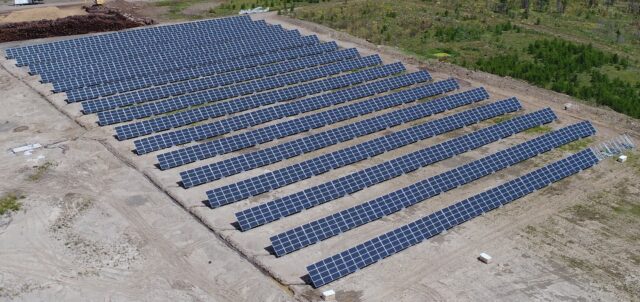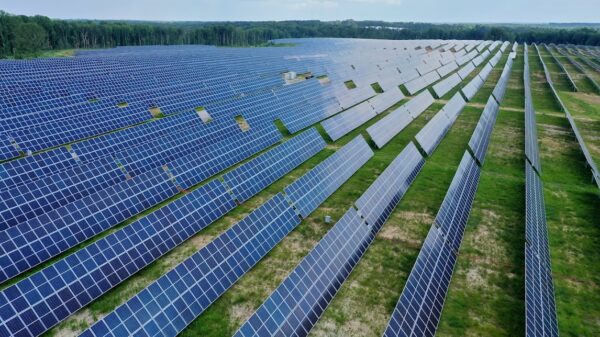The Canadian government unveiled a CAD$15.84 million funding package to support clean energy development and grid resilience in the Maritime provinces.
Earlier this month, the Honourable Tim Hodgson, Ministry of Energy and Natural Resources, announced the proposed investment last Friday. It aligns with national goals to modernize infrastructure, boost regional economic growth and create sustainable jobs throughout Atlantic Canada.
Nova Scotia, New Brunswick, and Prince Edward Island will receive a combined CAD$15.84 million in federal support for projects focused on electricity grid upgrades, renewable power, and carbon storage.
These will also include modernising electricity distribution systems, expanding renewable energy capacity, and deploying clean technologies such as carbon capture. Additionally, projects will focus on empowering Indigenous, rural, and remote communities through clean energy infrastructure.
According to Gilles Arsenault, Minister of Environment, Energy and Climate Action for Prince Edward Island, this investment is essential to enhancing the efficiency and resiliency of Prince Edward Island’s power grid. He also noted that it is a welcome step toward a more modern and reliable electricity system for the province.
A central goal of the initiative is to improve the delivery of clean energy by updating outdated grid infrastructure. Further, as climate pressures and energy demands increase, modernisation becomes vital. Therefore, the federal government’s support for grid modernisation projects is considered both timely and strategic.
These efforts are part of a broader framework under the Regional Energy and Resource Tables. These tables aim to foster inclusive collaboration among federal, provincial, Indigenous, and industry stakeholders. Their purpose is to identify growth opportunities, reduce regulatory burdens, and attract investment.
Read more: New green energy technique could kick lithium demand into high gear
Read more: Alberta opens first commercial hydrogen refuelling station south of Edmonton
Program supports scientific research and development
The Regional Tables function as a strategic tool to align regional strengths with national energy priorities. In Prince Edward Island, Nova Scotia, and New Brunswick, the tables have been instrumental in coordinating efforts among various stakeholders.
They also serve as a platform for long-term community and economic planning. Minister Hodgson stated that the government’s vision is to position Canada as a global leader in clean and conventional energy. He emphasized that these investments are key to achieving that objective.
Among the newly funded projects is the Energy Innovation Program – Smart Grid Demonstration.
This program supports scientific research, development, and demonstration activities that promote clean energy technologies. Projects selected under this initiative are intended to help Canada reach its climate targets and advance the low-carbon transition. Four projects under this program have received funding to pilot innovative smart-grid solutions.
The first project, titled Advanced Distribution Grid Management, is being undertaken by Nova Scotia Power Inc. in Halifax. It has received $6 million in funding. This project will demonstrate three new distribution grid technologies. The goal is to modernise the utility’s electricity distribution network and improve operational efficiency. In addition, the technologies are expected to improve service reliability for consumers.
Another project, known as Advanced Digital Distribution System Operator, will be carried out by Saint John Energy Inc. in Saint John, New Brunswick. This project has been allocated $5.25 million. It will focus on upgrading the city’s electricity distribution network using intelligent grid management systems. These upgrades are expected to deliver cost savings and enhance service reliability for approximately 36,000 customers.
For too long, power in the Maritimes just has not been affordable or reliable enough. If we're going to become an energy superpower, it's time to change that.
That's why I announced nearly $16 million last week for energy projects in PEI, Nova Scotia and New Brunswick: so we can… pic.twitter.com/cdvr63n8qs
— Tim Hodgson (@timhodgsonmt) July 15, 2025
Read more: Fighting climate change: A Mugglehead alternative energy roundup
Read more: Canada invests CAD$9m into clean hydrogen projects
Clean energy goes beyond smart grid projects
The Charlottetown-based Maritime Electric Company Ltd will lead a third initiative called the Charlottetown Grid Modernization Project.
The project has secured CAD$2 million in federal support. Its main objective is to integrate smart-grid technology using the public cellular network. Consequently, this will enable more responsive and efficient grid operations within the city.
Furthermore, the government issued Alternative Resource Energy Authority in Antigonish, Nova Scotia CAD$875,000 for a fourth project called Regionally Integrated Smart Meter Platform Enabling Load Shifting Coincident with Excess Renewables. It involves using advanced metering infrastructure and introducing new customer rate structures to reduce electricity costs for about 3,500 customers.
In addition to smart-grid projects, the government is also supporting carbon capture initiatives through the Energy Innovation Program – Carbon Capture, Utilization and Storage (CCUS) stream. This program enhances the commercial viability of CCUS technologies and reduces greenhouse gas emissions.
One of the newly funded projects in this area is titled A Regulatory Roadmap for Offshore Carbon Storage in Atlantic Canada. It is being led by Dalhousie University in Halifax and will receive CAD$704,089 in funding.
This project aims to develop a policy and regulatory roadmap for offshore carbon storage.
Experts see offshore storage as a key solution for reducing emissions from heavy industries. However, regulatory clarity is still lacking. Therefore, this project will focus on identifying policy gaps and proposing regulatory frameworks that support future development.
Read more: China reveals lithium battery tech that spots deadly failures before battery activation
Read more: Green hydrogen racing championship takes first step towards full electrification

TThe Tsilhqot’in Solar Farm in BC, an example of a First Nations group leveraging solar. Image from EcoSmart.
Advancing First Nations pursuit of self-determination
Furthermore, the federal government is investing in projects that support Indigenous participation in Canada’s clean energy economy.
The Indigenous Natural Resource Partnerships program increases Indigenous community involvement in natural resource projects, advancing both economic reconciliation and environmental goals.
Millbrook First Nation is leading the Dartmouth Solar Power Generation Project near Truro, Nova Scotia. The project will receive CAD$1.01 million in federal funding. Millbrook and Imperial Oil are repurposing idled tank lots left vacant since Imperial’s 2014 refinery conversion. The partners will build a solar farm with photovoltaic arrays on the reclaimed site. Further, the project may include energy storage systems to enhance capacity and reliability. Also, Millbrook First Nation will hold majority ownership and operate the project.
This solar initiative is significant because it transforms unused industrial land into a productive, clean energy asset. Additionally, it enables the community to gain ownership in energy infrastructure, creating both environmental and economic benefits. It represents a step forward in the broader movement toward Indigenous economic self-determination in the energy sector.
The combined investments represent a deliberate and collaborative effort to support the region’s transition to a cleaner energy future. These projects not only align with Canada’s national climate targets but also reflect the unique strengths and priorities of the Maritime provinces. By supporting grid modernisation, advancing carbon capture, increasing renewable capacity, and engaging Indigenous communities, the government is aiming for a comprehensive transformation of the region’s energy landscape.
.














